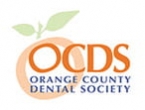Posted: May 22, 2012
The New York Times reported on May 20th that two independent studies have shown that sleep apnea is linked to a higher incidence of cancer. One study was conducted at the University of Wisconsin found that a person suffering from severe sleep apnea was 4.8 times more likely to die from cancer than someone who did not suffer from sleep apnea. People with moderate sleep apnea were found to be twice as likely to die from cancer. Doctors conducting the study suspect that the low oxygen levels associated with sleep apnea during sleep are linked to the development of cancerous tumors.
A Spanish study linked the degree of the body’s oxygen depletion during a persons night sleep due to sleep apnea to an increase in the incidence of cancer. Subjects with sleep apnea in the study whose oxygen levels were below 90% for 12% of their total nights sleep were 68% more likely to develop cancer.
The New York Times is reporting that both of these studies are being presented at this weeks American Thoracic Society conference in San Francisco.
These studies add to the growing list of morbidities that are linked to sleep apnea. Alzheimer’s disease, high blood pressure, stroke, heart attack, and diabetes have all been shown to have a connection to sleep apnea. It makes sense that the potential consequences of repeated low oxygen levels night after night for an indefinite number of years would be severe. The consequences of lower oxygen levels every night are like throwing the day’s loose change into a 5 gallon water bottle. Eventually the five gallon bottle becomes full and all that loose change adds up!
Common signs of sleep apnea include snoring or breathing interrupted by pauses or gasps. A person’s bed partner is often the best person to assess the snoring or pauses in breathing. Fatigue during the day or waking up with a headache are common for people with sleep apnea as well. High blood pressure, irritability, and loss of libido have been associated with patients suffering from sleep apnea. There are several signs of sleep apnea that are seen in the mouth. These include a narrow arch with crowded teeth, scalloped marks on the side of the tongue, bumps of bone called tori between the teeth and the tongue, and a retruded chin or jaw.
Treatment for sleep apnea usually involves a Continuous Positive Airway Pressure (CPAP) machine or a dental appliance that when worn opens the airway by advancing the jaw slightly forward. Both of these treatments are approved by the American Academy of Sleep Medicine and are usually covered by your medical insurance.
Lots of procedures we do in dentistry positively effect lives. Recognizing our patients signs and symptoms of sleep apnea can provide the ultimate service for our patients….Saving Lives! If you or your spouse or loved one have any of these symptoms or you have any questions regarding sleep apnea please don’t hesitate to call our office today at (714) 385-1672.








